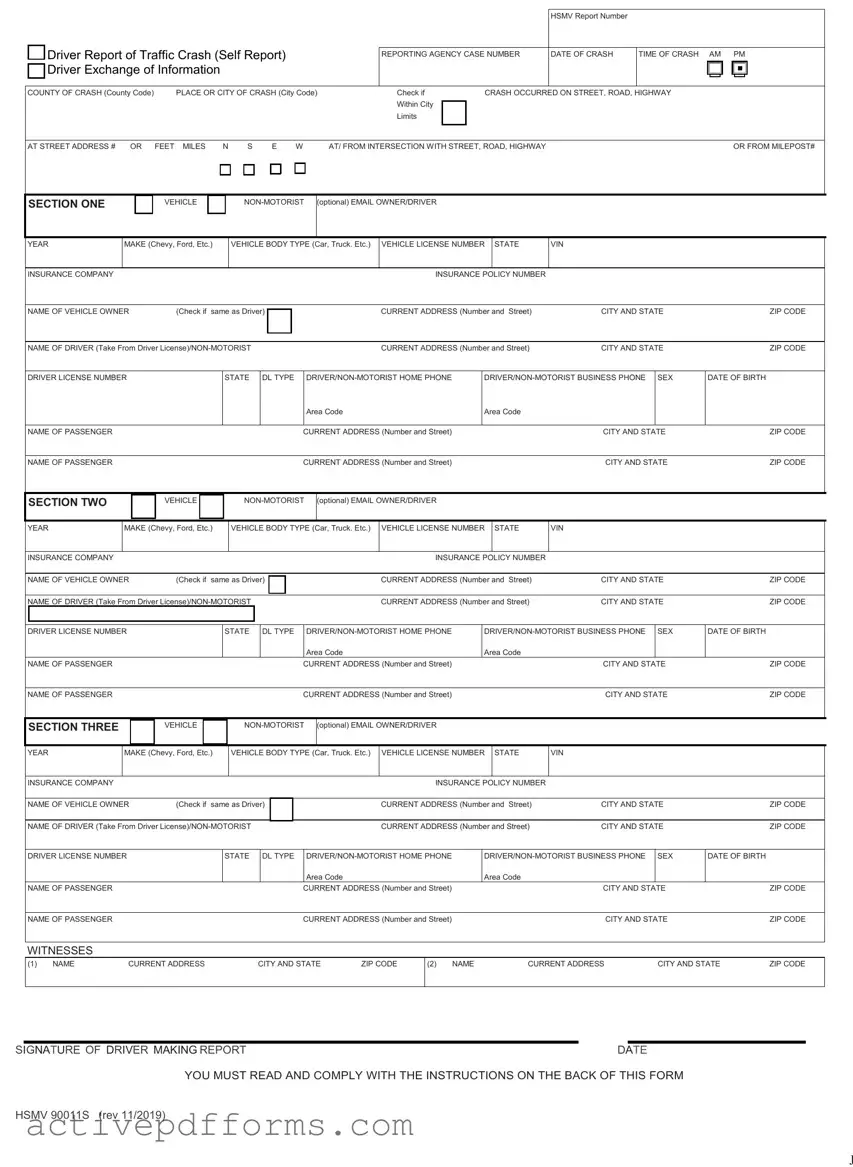In the state of Florida, when a traffic crash occurs that results in damage to a vehicle or other property but doesn't necessitate intervention by law enforcement at the scene, involved drivers are required to submit a detailed report of the incident to the Department of Highway Safety and Motor Vehicles (DHSMV) within ten days following the crash. This obligation is fulfilled through the completion of the Florida Traffic Crash Report form, an official document designed to capture all pertinent information surrounding the event. Key elements of the form include identifying information for each driver involved (and, optionally, non-motorists), such as names, addresses, and contact information, as well as detailed descriptions of the vehicles involved, including year, make, model, body type, and identifying numbers like the vehicle license and VIN. Additionally, the report requires information regarding the insurance coverage of the vehicles, specifics of the crash itself (date, time, location), and any witnesses who may have observed the incident. The form serves not only as a legal requirement but also as a crucial piece of documentation for insurance claims, making its accurate and prompt submission essential for all parties involved. Understanding the sections and requirements of this form can significantly streamline the reporting process, ensuring compliance with Florida law and aiding in the efficient handling of any subsequent insurance matters.


 Driver Report of Traffic Crash (Self Report)
Driver Report of Traffic Crash (Self Report) 
 Driver Exchange of Information
Driver Exchange of Information